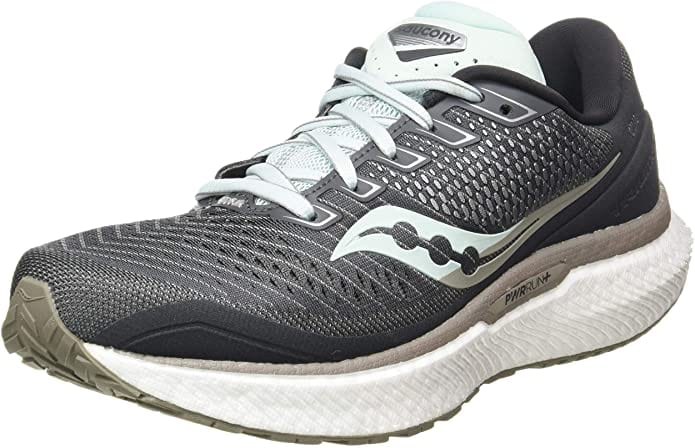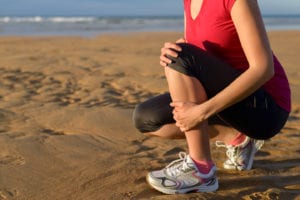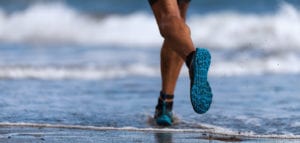- Alan Martin
When looking for the best running shoes for high arches, there are many important factors to consider. The shoe must fit properly all-around from heel to toe, snug in every nook and cranny. To determine the best qualities, you must first understand shoe anatomy. Characteristics such as the upper, ankle collar, heel counter, and midsole are vital components to finding the perfect sneaker. Also, it would be beneficial to know which arch type you have. Choosing the right running shoe for high arches is highly important as it will help prevent injury and provide the utmost comfort for high-arched runners.
Best Sneakers for High Arches
1. Asics Gel-Nimbus 23 Road Running Shoe

The Asics Gel-Nimbus 23 sneaker will satisfy all of your daily runner’s needs. This running shoe packs cutting-edge comfort into a durable and reliable shoe. If you’re looking for a smooth ride, this is without a doubt the shoe for you.
Pros
- Contains gel cushioning in the heel, allowing for more shock-absorption with every stride
- Mid-foot panel is pretty malleable, optimizing mid-sole flexibility
- Gender-specific design has features that accommodate the feet for men and women respectively
- Narrow-medium interior construction allows for a true-to-size fit
- Padded heel collar and plush, wide tongue provides increased comfort, flexibility, and breathability
- Updated engineered mesh upper gives the toes more space to spread out within the toe box
Cons
- Not a very lightweight sneaker
- Not ideal for running long-distances, such as in marathons
Takeaway
The Asics Gel-Nimbus 23’s good qualities definitely outweigh the bad, which is why we’d highly recommend this running shoe for those who train on a consistent basis. The construction and technology of the shoe allow people to thoroughly enjoy wearing this model. However, if you want to run hard but tread lightly, then you might want to consider the Nimbus Lites.
2. Brooks Ghost 13 Road Running Shoe

For new and experienced runners, the Brooks Ghost 13 is one of the most elite models. The performance is reliable as well as comfortable due to enhanced technology and its unmatched versatility.
Pros
- DNA Loft midsole foam extends from the heel to the forefoot for improved comfort
- Absorbs and reduces shock exceedingly well
- Stretchy mesh upper caresses the foot for improved breathability
- AirMesh keeps toe box cool when exercising in warm temperatures
- Offers a design for both men and women
- Lightweight feel which is great for walkers and runners
- OmegaFLex grooves optimize flexibility
Cons
- Short life expectancy - 300 to 500 miles or three to six months
Takeaway
Overall, the Brooks Ghost 13’s are an extremely versatile and comfortable shoe thanks to its new and improved high-tech construction. The DNA Loft cushioning system enhances support for wearers with each stride and provides maximum stability, delivering high-energy performance.
SEE ALSO: Brooks Ghost 13 GTX
3. Saucony Ride 13 Road Running Shoe

The Saucony Ride 13’s are for sure going to provide wearers with a firm ride and a great energy return with each step. This shoe offers a spacious fit in the midfoot and forefoot. The 13’s also have great stability from the internal heel cup, locking in the foot for maximum security.
Pros
- Strong upper design
- Dual lace options
- Reflective qualities
- Light and durable POWER RUN
- Long shelf-life
Cons
- Rubber tends to come off of outsole
- Lace material accumulates dirt and debris quickly
- Lacks breathability
Takeaway
Overall, the Saucony Ride 13’s are a comfortable shoe with some minor defects. The sneaker allows wearers to take advantage of its abilities for everyday runs, long-distance running, or even walking.
4. Saucony Triumph 18 Road Running Shoe

The Saucony brand is no stranger to providing quality sneakers in their lineup. The Triumph 18’s provide stability for a smooth and supported feel. Runners who are looking for long-distance and reliable sneakers, look no further.
Pros
- Sufficient cushioning and stack height (32.5mm back/24.5mm front) for maximum comfort
- Neutral, everyday shoe and/or running shoe
- FORMFIT technology system locks in the heels
- Models offered for both men and women
- Rubber traction grips hard terrain
Cons
- Slightly clunky shoe forcing runners to thoroughly break-in
- Overly thick tongue
- Lacks breathability in the upper forefoot leading to minimal temperature regulation
Takeaway
The Triumph 18’s are a great shoe for walkers and runners alike and has a pretty enduring shelf-life. If you enjoy a plush upper and a springy underfoot and don’t mind a little chunkiness, then these sneakers are the way to go.
5. New Balance Fresh Foam 1080v10 Road Running Shoe

The New Balance Fresh Foam 1080v10 is a high-quality sneaker that provides lightweight flexibility and cutting-edge comfort. Wearers compared the sneaker to “running on a cloud,” which lets the shoe speak for itself.
Pros
- Engineered HypoKnit upper and Ultra heel gives the shoe a supportive fit
- Laser engraving on midsole removes added weight
- FreshFoam provides added comfort and maximum energy return
- Excellent for long-distance running
Cons
- Susceptible to wear-and-tear
- The size tends to run small
- Foam might not be soft enough for some runners
Takeaway
The verdict for the New Balance Fresh Foam 1080v10’s is that they provide maximum protection while ensuring a firm and neutral ride. If there is any sign of corrosion, it typically comes from the FreshFoam on the outsole in the rear midfoot area, which wearers should be mindful of.
SEE ALSO: New Balance Fresh Foam 1080v11
6. Hoka One One Clifton 7 Road Running Shoe

If you want to walk, jog, or run long distances, then the Hoka One One Clifton 7’s are just what you need to add to your footwear collection. These shoes are stylish and comfortable, making them suitable for essentially any task.
Pros
- Full compression EVA gives the shoe a plush feel and a supportive fit
- Springy bounce which helps propel runners
- Sandwiched mesh construction in upper provides breathability
- Rear elf ear and Achilles tab for easy put on, easy take off
Cons
- Might feel heavy
- Toe box may need time to break into
Takeaway
As for whether or not this shoe is for you, more likely than not, it’s suitable for all wearers. The Achilles collar adds some flare to the style, which incentivizes everyday use. Regarding comfort, these running shoes have got you covered with a cushioned midsole that performs well during a routine run and even on recovery days.
7. Brooks Glycerin 18 Road Running Shoe

For runners everywhere, the Brooks Glycerin 18 is an exceptional model. This prototype is extremely popular in the runner’s community and utilizes unique technology – a 3D Fit Print saddle to provide a snug fit.
Pros
- OmegaFlex grooves for strong traction
- Super soft cushion material
- Soft and flexible upper
Cons
- Clunky
- Stiff heel collar
- Not waterproof
Takeaway
The shoe offers a high stack height, 31mm at the heel and 21mm at the forefoot, which allows for a sufficient amount of material for support. However, the Glycerin 18’s have a tendency to be heavy when running on a surface such as a racetrack and may become frustrating to manage under wet conditions.
SEE ALSO: Brooks Glycerin 19
8. Asics Gel-Cumulus 22 Road Running Shoe

As for the Asics Gel-Cumulus 22, this shoe is durable, lightweight, and perfect for runners and/or athletes. This shoe combines quality and comfort and will provide long-lasting wear.
Pros
- FLYTEFOAM ® and GEL ® tech offer a super-soft ride, excellent for use as a daily trainer
- Lightweight due to mesh upper
- 3D foot upper provides support and the right amount of flex
- Sturdy shoe with great rebound
- AHAR ® rubber outsole enhances durability
- Well-ventilated to ensure breathability
Cons
- May fit a bit narrow for some
- Heel construction might be irritating for some wearers
Takeaway
The Asics Gel-Cumulus 22 is a high-quality sneaker built to last and is wearable for athletes looking to train. The neutral support is efficient and supportive for runners looking for a smooth ride.
9. Brooks Dyad 11 Road Running Shoe

The Brooks Dyad 11’s offer neutral support for road runners. The technology in this model includes a segmented crash pad for shock absorption, and BioMoGo DNA to help adapt to the runner’s stride, weight, and speed.
Pros
- Deflects impact away from the body to cushion
- Wide platform and dual arch pods that provide stability
- Generous fit to maximize comfort, especially for orthotic wearers
- Can wear for everyday use
Cons
- Not as optimal for people who have a tendency to pronate
- Not super comfortable for those with high arches
- Sole tends to be too firm
Takeaway
The Brooks Dyad 11’s are ideal for neutral support, particularly those who are susceptible to supination. If you are someone who is flat-footed, then these sneakers will be beneficial for supportive, orthotic functions, otherwise, high arch wearers should be cautious.
How to Check for High Arches
When choosing footwear or other orthopedic accessories, it’s imperative to know your foot type. Some people may be flat-footed, while others have high arches; each will determine which running shoe is most compatible with your arch type. Fortunately, there is an easy way to determine your arch height using something called the “wet test.”
The “wet test” is pretty simple. All that it requires is stepping out of a shower or tub onto a surface that will take an imprint of your foot. Something like a piece of heavy paper or a cardboard box should help you find an accurate measurement. If you have flat feet, look at your arches in an unweighted position. The easiest way to measure is to sit down and put your ankle on the opposite knee.
If your feet are flat while sitting and standing, a low arch insole will be ideal for you. If your feet are flat while standing only, but you can see an arch when you sit, a medium arch will be the most comfortable.
Important Features for Runners With High Arches
If you’re a runner with high arches, there are a few things that should be on your radar. Definitely be on the lookout for these:
- High levels of cushion and support
- Hard exoskeleton support for heel stability
- Plush inner padding for maximum comfort
- Lightweight and breathable material
- Cradle around entire foot for enhanced security
Frequently Asked Questions
Are high arches good for running?
Runners with high arches are typically more susceptible to bone-related injuries such as shin splints and stress fractures. This is because high-arched runners tend to run with stiff legs, causing them to bend their knees less and put more pressure on the bone below the knee. What’s most important in this case is choosing the proper footwear that is suitable for high arches.
What problems do high arches cause?
High arches can cause a range of issues, including plantar fasciitis and metatarsalgia. Claw toes, hammer toe, and foot and ankle instability are other problems that can arise due to high arches. These can all increase your risk of ankle sprains due to the heels being pointed toward the middle of the body. High arches can also lead to other problems like corns and calluses on the bottom of the foot and put people at increased risk for developing tight lower calf muscles.
Are Asics good for high arches?
Asics are definitely great shoes for high arches. The toe box and midfoot, without a doubt, are highly accommodating for those with high arches. The heel counter stabilizes the heel, providing maximum comfort for high-arched wearers. This prevents excessive heel rotation and lowers the risk of injury due to high arches.
Is arch support good for high arches?
Arch support typically helps alleviate pain for people with high arches. Orthotics such as insoles will help relieve excess pressure on the ball and heel of the feet and distribute weight more evenly. High-arch insoles will also help prevent supination and absorb the impact of walking, running, or jumping. If you have high arches, you will need an insole specific to you to mitigate the risk of injury. Ideally, look for an insole with flexible support that you can wear in any shoe.
Which is worse: flat feet or high arches?
Much more research needs to be done regarding whether or not high arches or low arches are better or worse for running. Low-arched runners also carry their own set of problems affecting the soft tissues, like Achilles tendinopathy and runner’s knee. Both arch types cause an abnormal load on different parts of the foot leading to excess pressure, which can cause pain and inflammation.











